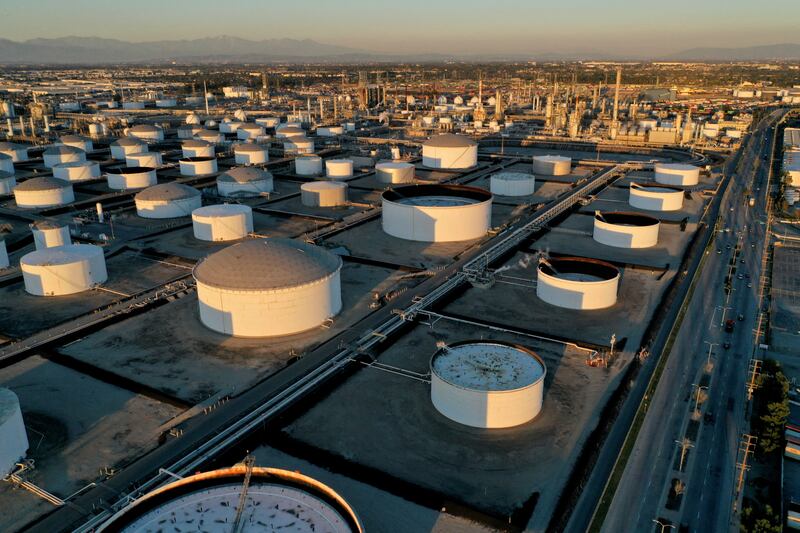Oil prices settled higher on Friday and recorded a weekly gain amid a surprise drop in US crude stocks and persisting Middle East supply risks.
Brent, the benchmark for two thirds of the world’s oil, settled 0.55 per cent higher at $89.50 a barrel.
West Texas Intermediate, the gauge that tracks US crude, was up 034 per cent at $83.85 a barrel.
US inflation rose higher than anticipated last month, dealing another setback for the US Federal Reserve's expectations for a soft landing. Lower interest rates stimulate economic growth, resulting in higher crude demand.
The Personal Consumption Expenditures (PCE) Price Index rose 0.7 per cent last month, the Commerce Department reported on Friday. On an annual basis, headline inflation rose 2.7 per cent.
Core PCE, which excludes food and energy, rose 2.8 per cent annually, unchanged from February but above economists' expectations.
The central bank is anticipated to implement three interest rate cuts this year to support growth in the world’s largest economy.
However, markets now expect the Fed to cut rates by only 25 basis points this year, according to CME's FedWatch tool. That would bring the Fed's target range down to 5 per cent and 5.25 per cent.
Meanwhile, US crude inventories, an indicator of fuel demand, decreased by 6.4 million barrels in the week ending April 19, according to the US Energy Information Administration data.
Analysts polled by Reuters were expecting American crude stocks to expand by 825,000 barrels.
“Crude oil prices stabilised … as traders absorbed the US crude oil inventory figures, which came in lower and were positive for prices in the short term,” said Rania Gule, a market analyst at XS.com.
“The decrease in US barrel inventories helps balance widespread risk aversion flows in the market. This supports stability while competing with declining fuel demand in the US, amid escalating tensions in the Middle East, a region of paramount importance for oil production, where any escalation would favour upward movement.”
US petroleum inventories, on the other hand fell by 600,000 barrels, while distillate stocks increased by 1.6 million barrels, data from the Washington, DC-based EIA showed.
Oil prices have gained more than 16 per cent this year driven in part by output cuts implemented by the Opec+ group of crude producers. Fears of a potential disruption of crude shipments from the Middle East amid the continued geopolitical uncertainties has also pushed prices higher.
“Reduced geopolitical risk premium for oil and a broader risk-off tone is being overshadowed by bullish US crude inventory numbers,” said Ehsan Khoman, head of commodities, ESG and emerging markets at MUFG.
“Brent crude has held above the 50-day moving average of $86 a barrel – comforting for oil bulls and adds further support to the narrative that $85 a barrel marks a psychological level, below which oil has not closed since mid-March.”







